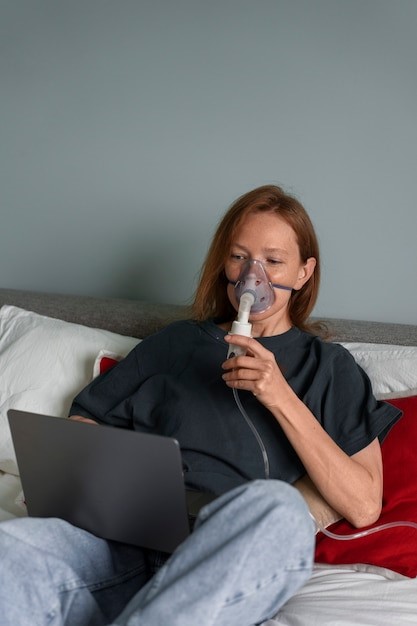Institution
The Research Unit PROgrez, Department of Physiotherapy and Occupational Therapy, Naestved-Slagelse-Ringsted Hospitals, Slagelse, Denmark.
Institution Typology
Hospital
Country
Denmark
Description
Intervention design: Adult patients with incompletely controlled asthma attending respiratory specialist clinics were randomized to usual specialist care (UC) or UC and Breathing Exercises (UC 1 BrEX) with three individual physiotherapist-delivered sessions and home exercises.
UC was delivered at all sites (planned or acute visits) as, for example, assessment of asthma control, pharmacotherapy adjustment, or self-care instructions BrEX were delivered at the seven hospital sites’ physiotherapy units by trained physiotherapists. BrEX were provided face to face at three individual sessions (60 1 30 1 30 min, 3–4 weeks apart) and included instructions for home practice (10 min twice daily), and a booklet, which describes the program and specific exercises thoroughly (E1 in the data supplement; the material can be reused if this publication and the first author are cited).
BrEX complied with the program used in the large mild to moderate asthma randomized control trial and included, in brief, nasal inhalation; breathing from diaphragm and lower chest; normalization of the tidal volume; shoulder, neck, tongue, and jaw relaxation; exhalation to functional residual capacity; aiming for respiration frequency of 12–16/min; suppression techniques (if frequent yawns, dry coughs, or sighs); exhalation prolongation and/or breath-hold technique (if elevated respiration frequency) and starting at relaxed body position progressing to use during physical activity.
People involved: 193, G1 = 94 people (UC + BrEX), G2 = 99 people (UC), G1: 55 years (44-65), G2: 51 years (42-61)
Inclusion criteria were aged >18 years, attending specialist care (more than two visits) with incomplete asthma control (Asthma Control Questionnaire [ACQ6] score of 1.5 or higher). Exclusion criteria were pregnancy, previous BrEX training before inclusion, or severe comorbidity (i.e., patients with short life expectancy due to terminal illness, or severe physical impairments or mental disease that would prevent participation in the intervention as evaluated by the pulmonologist).
Identified barriers: The authors were unable to blind participants to the intervention, which may lead to unspecific, contextual effects in the active group who experienced increased attention from the trial physiotherapist.
Sustainability
Transferability: A high attendance rate for the BrEX sessions with the physiotherapists and high scores in adherence to home exercise indicated that the intervention was well tolerated, acceptable, and practiced by most.
The included sites represented all Danish health regions, with a number of different physiotherapists delivering BrEX, all experienced at providing BrEX, and attempted to standardization delivery as much as possible, observing consistent effects across sites. The multicenter and multitherapist aspects as well as the inclusion of larger and smaller outpatient departments give confidence to external validity, and similarly, the constancy of observed effect size with previous studies in milder asthma supports validity.
Disease
Asthma
Activity level
Medium
Activity Typology
Rehabilitation section-based activities
Motivation Tools
Not available








